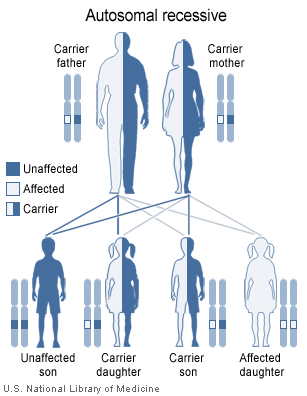Shwachman-Diamond syndrome pathophysiology
|
Shwachman-Diamond syndrome Microchapters |
|
Differentiating Shwachman-Diamond Syndrome from other Diseases |
|---|
|
Diagnosis |
|
Treatment |
|
Case Studies |
|
Shwachman-Diamond syndrome pathophysiology On the Web |
|
American Roentgen Ray Society Images of Shwachman-Diamond syndrome pathophysiology |
|
Risk calculators and risk factors for Shwachman-Diamond syndrome pathophysiology |
Editor-In-Chief: C. Michael Gibson, M.S., M.D. [1]
Overview
Pathophysiology
Genetics

Shwachman-Diamond syndrome is characterized by an autosomal recessive mode of inheritance. The gene that is mutated in this syndrome (SBDS) lies on the long arm of chromosome 7 at cytogenetic position 7q11. It is composed of five exons and has an associated mRNA transcript that is 1.6 kilobase pairs in length. The SBDS gene resides in a block of genomic sequence that is locally duplicated on the chromosome. The second copy contains a non-functional version of the SBDS gene that is 97% identical to the original gene, but has accumulated inactivating mutations over time. It is considered to be a pseudogene. In a study of 158 SDS families, 75% of disease-associated mutations appeared to be the result of gene conversion, while 89% of patients harbored at least one such mutation. Gene conversion occurs when the intact SBDS gene and its pseudogene copy aberrantly recombine at meiosis, leading to an incorporation of pseudogene-like sequences into the 'good copy' of the SBDS gene, thereby inactivating it. Two gene conversion mutations predominate; one is a splice site mutation affecting the 5' spice site of intron two, while the second is an exon two nonsense mutation.
Molecular Basis of Disease
The SBDS gene is expressed in all tissues and encodes a protein of 250 amino acid residues. The function of this protein is not known and it has no primary sequence similarity to any other protein or structural domain that would indicate a possible function. The atomic structure of an archeal ortholog of the human protein has been determined by x-ray crystallography and indicates a novel 3 dimensional fold in the most N-terminal of the three structural domains and many of the known human disease associated mutations and truncations occur within this structural domain. There is however, a great deal of indirect evidence to suggest that the SBDS protein may be involved in an aspect of cellular RNA metabolism or ribosome assembly or function. The wide occurrence of the gene in all Archaea and Eukaryotes supports a role for this protein in a very fundamental and evolutionarily conserved aspect of cellular biology. A specific function for SBDS in RNA metabolism or ribosome assembly or function is supported by its localization to the nucleolus, the nuclear sub-domain where these processes occur. At present, it is not obvious how disruption of a basic cellular process causes the tissue- and organ-specific manifestations seen in SDS. However, unusual and combinations of tissues and organs are also affected in Diamond-Blackfan anemia, X-linked dyskeratosis congenita, and cartilage-hair hypoplasia - three diseases that may also be linked to defective ribosome function.